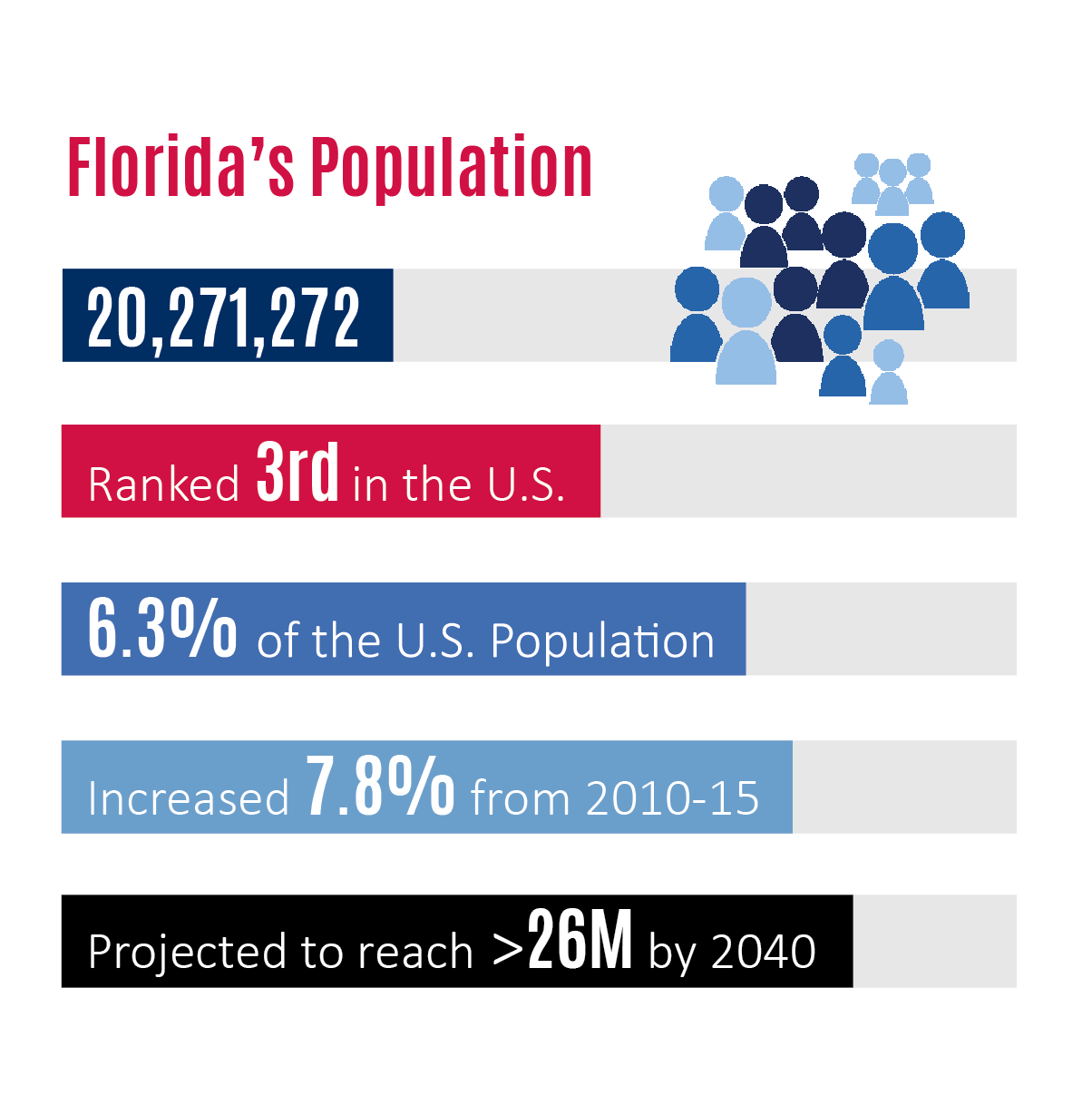Sunshine State Surge: Florida’s Population Boom and What It Means
Sunshine State Surge: Florida’s Population Boom and What It Means
Florida. The land of sunshine, beaches, and, apparently, a whole lot of people. It’s no secret that the Sunshine State has been experiencing a population boom in recent years, attracting newcomers from all over the country and beyond. But what’s driving this surge, and what does it mean for the future of Florida? Let’s dive in and see what’s shaking.
The Numbers Don’t Lie:
Related Articles: Sunshine State Surge: Florida’s Population Boom and What It Means
- Texas Tribes: A Map To Their Rich History And Legacy
- Unveiling the Vital Role of Indian Reservation Hospitals in New Mexico: A Promise of Health, Healing, and Cultural Preservation
- Unveil the Blackfoot Legacy: Discoveries from Montana's Indian Reservation
- North Dakota’s Tribal Lands: A Map Of Resilience And Culture
- Discover the Vibrant Heart of Indian Reservation Yuma AZ
Florida’s population growth has been nothing short of explosive. In the past decade, the state has added over 3 million residents, a whopping 16% increase. That’s more people than live in the entire state of Arizona! And it’s not just a recent trend; Florida has been one of the fastest-growing states in the country for decades.
What’s Driving This Frenzy?
So, what’s making Florida so darn attractive? Well, it’s a combination of factors:
- Weather, Weather, Weather: Let’s face it, Florida’s weather is a major draw. Warm sunshine, balmy breezes, and a lack of snow (unless you’re in the panhandle, that is!) are enough to entice anyone who’s tired of the cold.
- Retirement Haven: Florida has long been a popular destination for retirees seeking a more relaxed lifestyle. The state boasts a wealth of retirement communities, affordable housing options, and plenty of opportunities to stay active and engaged.
- Economic Opportunities: While Florida’s economy isn’t solely based on tourism, it’s a major player, attracting entrepreneurs and job seekers alike. The state also boasts a growing tech sector, particularly in the Orlando and Miami areas.
- No State Income Tax: That’s right, folks. No state income tax! This is a major perk for many, especially those seeking to maximize their retirement income or lower their overall tax burden.
- Cultural Diversity: Florida is a melting pot of cultures, with a vibrant mix of Latin American, Caribbean, and European influences. This diversity adds a richness to the state’s social scene and creates a welcoming atmosphere for newcomers.

The Flip Side of the Coin:
While Florida’s population boom has many benefits, it also presents some challenges:
- Infrastructure Strain: With more people comes more traffic, more demand for housing, and more pressure on infrastructure like roads, schools, and hospitals. Florida’s infrastructure is struggling to keep up with the rapid growth, leading to congestion and strain on public services.
- Environmental Concerns: Florida’s natural beauty is one of its biggest assets, but it’s also facing environmental challenges like rising sea levels, water pollution, and habitat loss. The growing population puts further pressure on these delicate ecosystems.
- Affordable Housing Crisis: The demand for housing is outpacing supply, leading to skyrocketing rents and home prices. This affordability crisis is making it difficult for many, especially younger generations, to find a place to call home.
- Social Strain: While Florida’s diversity is a strength, it can also lead to social tensions. The influx of new residents can sometimes create friction with existing communities, especially when it comes to issues like language, culture, and political beliefs.


The Future of Florida:
So, what’s the future of Florida? Will the population boom continue, or will the state eventually reach a tipping point? It’s hard to say for sure, but it’s clear that Florida will continue to be a magnet for newcomers for the foreseeable future. The state’s economy, weather, and lifestyle are simply too enticing to ignore.
However, it’s crucial that Florida addresses the challenges that come with its growth. Investing in infrastructure, protecting the environment, and ensuring affordable housing will be critical to maintaining the state’s quality of life and attracting future generations.
Florida’s population boom is a complex story with both bright spots and looming challenges. It’s a story that will continue to unfold in the years to come, and its outcome will depend on how the state navigates the balance between growth and sustainability.
FAQ: Florida’s Population Boom
Q: What is the current population of Florida?
A: As of 2023, Florida’s population is estimated to be around 22 million.
Q: How much has Florida’s population grown in the last decade?
A: Florida’s population has grown by over 3 million people in the last decade, a 16% increase.
Q: What are the main reasons for Florida’s population boom?
A: Florida’s population boom is driven by factors such as its warm weather, retirement opportunities, economic growth, no state income tax, and cultural diversity.
Q: What are the challenges associated with Florida’s population growth?
A: Challenges include infrastructure strain, environmental concerns, an affordable housing crisis, and potential social strain.
Q: What steps can Florida take to address the challenges of its population growth?
A: Florida can address these challenges by investing in infrastructure, protecting the environment, ensuring affordable housing, and promoting social cohesion.
Q: Is Florida’s population growth sustainable in the long term?
A: Whether Florida’s population growth is sustainable in the long term depends on how effectively the state addresses the challenges associated with it. Continued investment in infrastructure, environmental protection, and affordable housing will be critical to ensuring a sustainable future for the Sunshine State.

Closure
Thus, we hope this article has provided valuable insights into Sunshine State Surge: Florida’s Population Boom and What It Means. We thank you for taking the time to read this article. See you in our next article!



